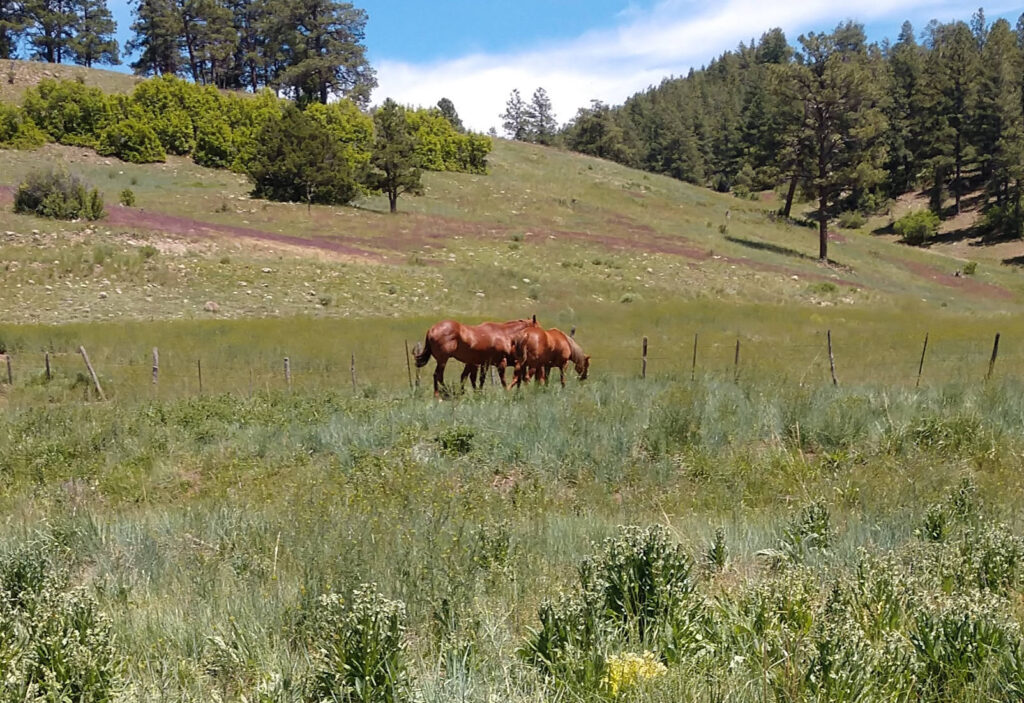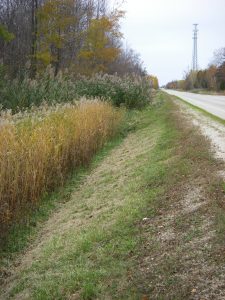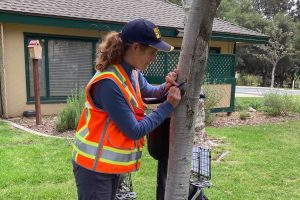This blog was originally posted on PlayCleanGo.org.
While prevention is the most vital step in invasive species management, sometimes an infestation can’t be helped. Once a noxious weed infestation has been established on your property, you’ve got to figure out what to do with it. That can be a discouraging prospect.
For example, let’s say you discover a musk thistle infestation. After doing some research and consulting local experts, you learn this plant’s seeds survive in the soil for 50 years, and controlling them can be daunting task.
But total eradication isn’t always a realistic or desirable goal when responding to an invasive species infestation. In fact, once you know an infestation exists, there are three different major control goals to consider: eradication, containment, and suppression.
Eradicate the Invasive
Eradication is fairly simple; all standing plants must be destroyed and the site monitored for the length of time the seeds are viable. This is feasible when you’ve discovered your first invader and it’s a single plant. Treat it or pull it before it flowers, and watch the area to see if more weeds appear. Seeds can be moved by wild animals like birds, so a weed on your property isn’t an indication that you’ve done something wrong.
Contain the Invasive
If you discover that the white daisy you liked all over your yard is oxeye daisy, which is noxious and extremely aggressive, containment is best. Depending on the size of the property in question, it can be treated in a single season or day. If it covers a number of acres, begin at the edges of the infestation and create a fifty foot buffer zone and work inward each year. It may be tempting to start at the epicenter of invasion, but this will only allow the weeds to spread and you will constantly be chasing a moving target. Each year, work inward, monitoring the area treated the previous year.
It is wise to treat property boundaries, driveways, and heavily trafficked areas first to prevent further spread. As tempting as it may be, do not treat your neighbor’s land for them unless you have their explicit consent. They may have an organic farm, animals, or other reasons for not using herbicides. Also, if you misapply the herbicide and do not follow label directions, it is a federal violation.
Weeds that may be hand-pulled or mowed can also be contained following the same procedure as with chemical applications. Never mow a plant that has already gone to seed unless you can contain those seeds and prevent them from being flung by the blades of the mower.
Suppress the Invasive
Suppression of weeds means that their spread and seed production are limited. If you have mullein on your property, you might like how it looks or use it as an herbal remedy. That is fine, but do your part to prevent its spread. The seeds persist in the soil for up to 100 years and you won’t need to keep replanting. Cut all seed heads off the plant and dig up rosettes that are escaping down your driveway. Suppression can also be achieved by using biological controls. Not all weeds have a biocontrol option; check your state’s Department of Agriculture website to request biocontrols.
Choosing a Weed Management Tactic
Moving from noxious weeds (those that the law mandates we control) to all other weeds:
A weed is defined as a plant out of place. Weeds do not exist in biology, which favors the strongest species or punishes the weakest. If you don’t want a plant in your yard, decide whether:
- You absolutely cannot live with it and need to eradicate it,
- You simply don’t want it near your house and prefer to contain it in another area, or
- It’s taking over your yard and you need to suppress it to prevent it from moving into your neighbor’s field
A diversity of plant species is a sign of a healthy ecosystem, and seasonal and yearly changes are to be expected. Sometimes a change in dominant plant species is part of the natural cycle, and they are replacing the nutrients taken from the soil by the dominant species the previous years. In drier years especially, you may see a different variety of plants growing.
Remember, your reason for controlling weeds is usually the deciding factor on which goal is right for you.

Written by Ethan Proud
Ethan is the Archuleta County Weed and Pest Supervisor in Pagosa Springs, Colorado. He is the Land Management Organizations representative on the PlayCleanGo National Advisory Council and serves on the Colorado Weed Managers Association’s education committee. He spends most of his free time outdoors, and finds it much more relaxing when he can enjoy the native ecosystems without seeing raging infestations of noxious weeds.




